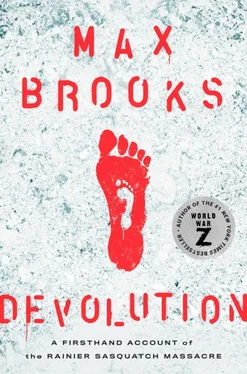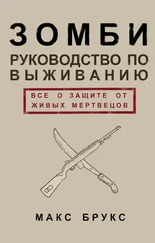Chapter 18

A’oodhu bi kalimaat Allaah al-taammaati min sharri maa khalaq.
I seek refuge in the perfect words of Allah from the evil of that which He has created.
—Sahih Muslim, Hadith 2708
JOURNAL ENTRY #14 [CONT.]
Mostar released my cheek, took my hand, and led me into her workshop. Her armory. That’s what it looked like now. Bamboo staffs against the wall, kitchen knives out on the workbench. Failed experiments, prototypes, were cast in the far corner. I could see unevenly sawed or split shafts, bent and chipped knives. Snapped shoelaces, different rolls of tape, and an unspooled tangle of shiny red Christmas ribbon.
“Stand here.” Mostar directed me to the middle of the room. “Back straight.” She stared me up and down for a second, then reached for one of the bamboo poles. “Stay still.” She placed the stalk against my back. “Almost perfect.” Then set the stalk on the bench. “Watch, listen. Remember each step exactly.”
That’s why I’ve written the next section down as a kind of instruction manual. I don’t trust I’ll remember anything after I pass out tonight. I’m also stuck on something Mostar said while we worked. Something about “teaching the rest of the village.” I didn’t ask what she meant. I didn’t get the chance. She just jumped right into the lesson and here it is.
—
How to make a spear from scratch:
Choosing the right bamboo staff is critical. It can’t be tapered. That’ll ruin the balance. And it’s got to fit your height. Too long is too unwieldly. Too short and you risk falling on the blade. It doesn’t have to be exact, more important that the top section perfectly encases the knife’s handle. The staff’s got to have the right girth, thick enough to be strong but not so wide that you can’t get a firm grip. (Wow, that sounds dirty. Sorry, I’m really loopy right now.)
When harvesting the stalk, you saw just below the bottom connector, or whatever those rings are called. It takes a while, especially with a skinny bread knife. And there’s a special method. If you go down one side, like with regular wood, and miss just a tiny bit of connecting fiber, that fiber will tear a strip down the whole length. As Mostar warns, “That will decrease integrity and increase splinters.” The trick is to first saw in a complete circle, severing that tough top layer, before going for the deep cut.
Next, you saw off all the branches (which can be made into stakes) and file down the sharp nubs with an emery board. Oh, for just one square of sandpaper!
I didn’t actually do these first two parts. That’s why she’d measured me. A pre-cut stalk would save time. That was the only part of the lesson she did herself. The rest was hands-on for me.
Like the shaft, choosing the knife takes careful consideration. You can’t just use the longest blade. Those tend to be too thin. The best option is the shorter, eight-inch “chef” type, which also needs to be the right design.
One solid piece, the steel going all the way down through the handle. Otherwise, you can’t attach it to the shaft. And attaching is the trickiest part. If the knife’s grip is held in place by pins, you’re in business. Pins mean holes in the steel. And those holes are the best way to tie them on, but I’ll explain that part in a minute.
Hopefully the grip itself is made of resin. That way you can smash it out with a rock. (I know… not one hammer in the whole village!) Be safe while smashing, those fragments can hit you in the eye. While wearing Mostar’s onion goggles, I felt little chips peppering my face.
Once the grip and the pins are removed, the next step is fitting. Slide the handle into the hollow top of the shaft. If it doesn’t fit (good strong bamboo might not have enough internal room), you’ve got to saw out a little groove with the bread knife. Once your naked blade fits snugly, take it right back out for measuring.
That’s where the handle holes come in. Place those holes against the outside of the shaft, mark them with a pen (Sharpie, if you got one), then do it again on the other side. See where I’m going with this? You bore those holes out with a paring knife. Take your time. Don’t rush. Mostar showed me where she chipped off the edge of a couple of paring knives, ruining them forever. Checking for light shows if they all line up. I got it right the first time, and Mostar seemed impressed. Apparently, that’s the easiest way to screw up, not matching the holes, and the more you drill, the more you weaken the bamboo.
Next, you sew the knife in, and that’s what the wire’s for. Mostar used a five-foot section of electrical cord from a floor lamp. After cutting the cord free (a regular scissors will do), pull the two sections apart (if it’s that kind). Set the extra section aside for another spear, and start threading the wire through the top hole. Sounds simple enough, but my first few tries only produced frustration. The tip kept getting stuck because I’d impatiently skipped a step. Shaving down the wire’s end rubber to a point turns it into a needle, which makes a world of difference!
Once the wire exits the second top hole, pull it through nearly to the end and tie the last inch or so into a secure knot. Then wrap the cord tightly round and round the bamboo until you get to the two bottom holes. Then thread it through, tie it off, and you’re done!
A real spear!
Mostar took the weapon from me, held it in her hands, checking the balance, squinted with one eye at the knotted wire, then handed it back. “Well done, Katie.” It was the first time she smiled all day.
I felt so proud. For a minute, I just handled my creation—vertical, horizontal. I even gave a short thrusting motion with both hands and accidentally banged the back end into the garage door.
“Sorry.” I felt my cheeks redden at the dent.
Mostar waved it away with, “Forget it.” Then, “I knew you’d be a natural at this. You have a logical, methodical mind. Much more than me.” She gestured to the aborted prototypes. “This is how it works. Try, fail, learn, then pass on eventual success for improvement.”
That sparked my own idea for an improvement. “What about melting the rubber? Won’t it hold the blade even more securely?”
“It might”—Mostar gave me that nod an encouraging teacher gives a well-meaning but totally wrong first-grader—“but it would ruin the wire, which we might need to make more spears.”
She gestured to a collection of shorter, thinner shafts. “That’s what worries me about the javelins. Losing a good knife every time we throw one. Although I guess they’ll just slide right out if I don’t figure out a way to make barbs.”
Another idea stirred, but this one was far more nebulous. I looked at the 3-D printer but couldn’t manage a cohesive thought. Instead, I ended up yawning, which gave me a sympathy yawn from Mostar.
“You need to sleep”—she glanced up at the wall clock—“when you take over watching Reinhardt. I don’t think he’s woken up yet. You’ll rest then. And eat.”
Eat.
I suddenly felt sick to my stomach. I’d been so wrapped up in making the spear, so engrossed in the step-by-step process. But with some of my focus freed…
I must have glanced over to the door, the kitchen, Vincent’s head in the freezer.
“We’ll bury him later.” Mostar, the mind reader. “When we’re safe, when we have time.”
I felt my head swim, lurching for the table.
“Take a breath.” Mostar took my spear, guiding me to the workbench’s little stool. “Try to relax.”
Читать дальше






![Traudl Junge - Hitler's Last Secretary - A Firsthand Account of Life with Hitler [aka Until the Final Hour]](/books/416681/traudl-junge-hitler-s-last-secretary-a-firsthand-thumb.webp)






